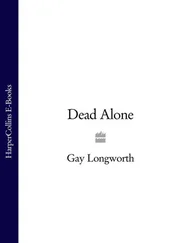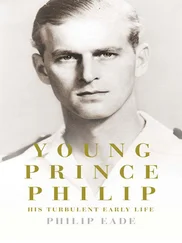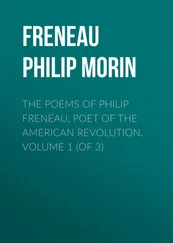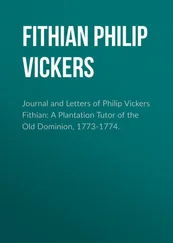33. See the contributions of D. Kayser, J. Kollman and others to the Marshall Poe web site www.people.fas.harvard.edu for June 2001, etc.
34. A. A. Zimin, V kanun groznykh potriasenii: predposylki pervoi krest’ianskoi voiny v Rossii (Moscow, 1986), p. 5.
35. ‘The Testament of Ivan IV, the Terrible’, in Howes, ed., Testaments of the Grand Princes of Moscow, p. 307-8.
1. See Zimin, V kanun groznykh potriasenii.
2. Chistiakova, Rogozhin et al., ‘Oko vsei velikoi Rossii’, pp. 71ff. Vasilii Shchelkalov took charge of the Foreign Office on his brother’s death.
3. See W. E. D. Allen, ed., Russian Embassies to the Georgian Kings (1589-1605) (2 vols., Cambridge, 1970), vol. 1, p. 60.
4. Zimin, V kanun groznykh potriasenii, p. 237.
5. M. Raeff, Siberia and the Reforms of 1822 (Seattle, 1956), p. xiv.
6. On frontier defences, see Khodarkovsky, Russia’s Steppe Frontier, pp. 131ff. passim.
7. Hakluyt, Voyages, vol. 3, p. 384.
8. V. Klein, Uglichskoesledstvennoe delo i smerti Tsarevicha Dmitriia (Moscow, 1913), and Veselovskii, Trudy po istochnikovedenii i istorii Rossii v periode feodalzma, pp. 156-89. See also R. G. Skrynnikov, Boris Godunov (Moscow, 1979), pp. 67-84.
9. For the Romanovs’ role in promoting, and exploiting, the cult, see A. Kleimola, ‘The Romanovs and the cult of the Tsarevich Dmitrii’, in Religiia i tserkov’ v kul’turno-istoricheskom razvitiei russkogo severa (Kirov, 1996), pp. 230-3.
10. On Boris himself, apart from Skrynnikov, Boris Godunov, see Chester Dunning’s compendious history of the Time of Troubles, Russia’s First Civil War: The Time of Troubles and the Founding of the Romanov Dynasty (University Park, Penn., 2001), pp. 9iff. and passim.
11. Nolde, La Formation de l’Empire Russe, vol. 2, p. 317.
12. Allen, ed., Russian Embassies to the Georgian Kings, vol. 1, pp. 87ff. for translations of the diplomatic record; the preceding introduction for the background, and the apparatus in vol. 2 for explanations of people, places etc. The list quoted appears in the embassy’s instructions: vol. 1, p. 98.
13. B. Gudziak, Crisis and Reform: The Kievan Metropolitanate, the Patriarch of Constantinople and the Genesis of the Union of Brest (Cambridge, Mass., 1998), is scholarly and helpful and, though by a Uniate, is not unsympathetic to Orthodox sentiments. See also M. Dmitriev, B. Floria and S. Iakovenko, Brestskaia uniia 1596g i obshchestvenno-politicheskaia bor’ba na Ukraine i v Belorussii v xvi-nachale xvii v, Pt 1 (Moscow, 1996), on the causes. However, an adequate account of how the religious divide between Orthodox, Uniate and Catholic came to be drawn has yet to be written.
14. Mouravieff, A History of the Church of Russia, p. 145.
15. Zimin, Vkanun groznykh potriasenii, p. 238.
16. Iu. Got’e, ed., Akty otnosiashchiesia k istorii zemskikh soborov, vyp. 1 (Moscow, 1909), pp. 12ff.
17. C. Bussow, The Disturbed State of the Russian Realm, trans. and ed. G. Orchard (Montreal, 1994), pp. 13-14. The account is confirmed by other sources.
18. Ye. Borisenkov and V. Piasetskii, Tysiachiletnaia letopis’ neobychnykh iavlenii prirody (Moscow, 1988), pp. 323-4.
19. Bussow, The Disturbed State of the Russian Realm, pp. 32—3.
20. Smith to Cecil, 25 February 1606, Cecil Papers 104/47, Hatfield House Library.
21. P. Longworth, ‘Political rumour in early modern Russia’, in Szvak, ed., Muscovy: Peculiarities of its Development, pp. 27-33.
22. The standard source for these events is Dunning, Russia’s First Civil War, pp. 131ff.
23. The New Chronicle quoted in Vernadsky et al., Source Book, vol. 1, p. 183.
24. References to most of these can be found in Dunning, Russia’s First Civil War; on Dmitry’s ‘magic with devils’, Ryan, The Bathhouse at Midnight, p. 39.
25. Dunning, Russia’s First Civil War, ch. 14.
26. The New Chronicle quoted in Vernadsky et al., Source Book, vol. 1, p. 183.
27. Dunning, Russia’s First Civil War, pp. 412—13.
28. Instructions for King Sigismund’s envoy to the Pope, 22 September 1611, Vernadsky et al., Source Book, vol. 1, pp. 201-2.
29. Iaroslavl to Vologda letter, February 1611, Vernadsky et al., Source Book, vol. 1, p. 197.
30. Dunning, Russia’s First Civil War, p. 421.
31. Archimandrite Dionysius’s appeal of 6 October 1611, Vernadsky et al., Source Book, vol. 1, p. 204; Letters from Kazan to Perm and from Tobolsk to Narym, September and October 1611, Vernadsky et al., Source Book, vol. 1, pp. 201-4.
32. Pozharskii to Solvychegodsk, 7 April 1612, Vernadsky et al., Source Book, vol. 1, pp. 205-7.
33. Ibid., pp. 199-200.
34. See R. Hellie, The Economy and Material Culture of Russia 1600-1723 (Chicago, 1999), p. 498.
35. Dunning, Russia’s First Civil War, pp. 438—9.
36. See the now rich literature on pretenders in the seventeenth and eighteenth centuries — Perrie, Skrynnikov, Longworth et al.
37. G. Hosking has argued that Russia’s development was impeded by a lack of national self-consciousness. Yet the mobilization letters quoted above suggest otherwise. The Russians had a clear sense of who they were at the beginning of the 1600s, and other ethnic groups in Russia seem to have shared that sense to some extent.
1. N. Rogozhin, ‘Mesto Rossii xvi—xvii vekov v Evrope po materialam posolskikh knig’, in Szvak, ed., The Place of Russia in Europe, pp. 88—96.
2. There was a rebellion in Moscow in 1648, serious riots in other major cities in 1650—51; the ‘Copper Riots’ of 1660—61, the huge uprising led by the Cossack Stepan Razin in southern Russia in 1670—71; the musketeer riot of 1682, etc.
3. The estimate is based on figures in D. Moon, The Russian Peasantry 1600—1930 (London, 1999), table 1.3 and p. 21, n. 17. Moon draws his data from Ye. Vodarskii, Naselenie Rossii za 400 let (Moscow, 1973), p. 27, and his Naselenie Rossii v kontse xvii—nachale xviii veka (Moscow, 1977), pp. 134, 192. I have adjusted Moon’s figures to take account of seventeenth-century frontier changes. The estimate in C. McEvedy and R. Jones, Atlas of World Population History (London, 1980), p. 79, seems somewhat inflated.
4. Hellie, The Economy and Material Culture of Russia, pp. 635—9.
5. Ibid., pp. 643, 637.
6. I have argued the point in Alexis, Tsar of All the Russias (London, 1984), p. 160.
7. Even the English-language literature on the conquest of Siberia is too considerable to list here, but I refer to the works I found useful in the references which follow.
8. See the instructions to the governor of Tsivylsk in Cheremis country near Kazan in Nolde, La Formation de l’Empire Russe, vol. 1, p. 75, quoting Dopolneniia k aktam istoricheskim (4 vols., 1846-72), vol. 2, doc. 79.
9. Tsar Vasilii Shuiskii to the governor of Pelym, 6 August 1609, in Vernadsky et al., Source Book, vol. 1, p. 263.
10. R. Fisher, ed., The Voyage of Semen Dezhnev in 1648 (London, 1981), pp. 107—8. For graphic evidence of the dangers and privations Stadukhin and other explorers confronted, see also pp. 74-84.
11. A well-informed defector to Sweden in the 1660s, G. Kotoshikhin (O Rossii v tsarstvovanii Alekseia Mikhailovicha, ed. A. Pennington (Oxford, 1980), p. 106, estimated the treasury’s annual income from Siberian tribute at over 600,000 rubles.
Читать дальше





![Stephan Orth - Behind Putin's Curtain - Friendships and Misadventures Inside Russia [aka Couchsurfing in Russia]](/books/415210/stephan-orth-behind-putin-s-curtain-friendships-a-thumb.webp)





